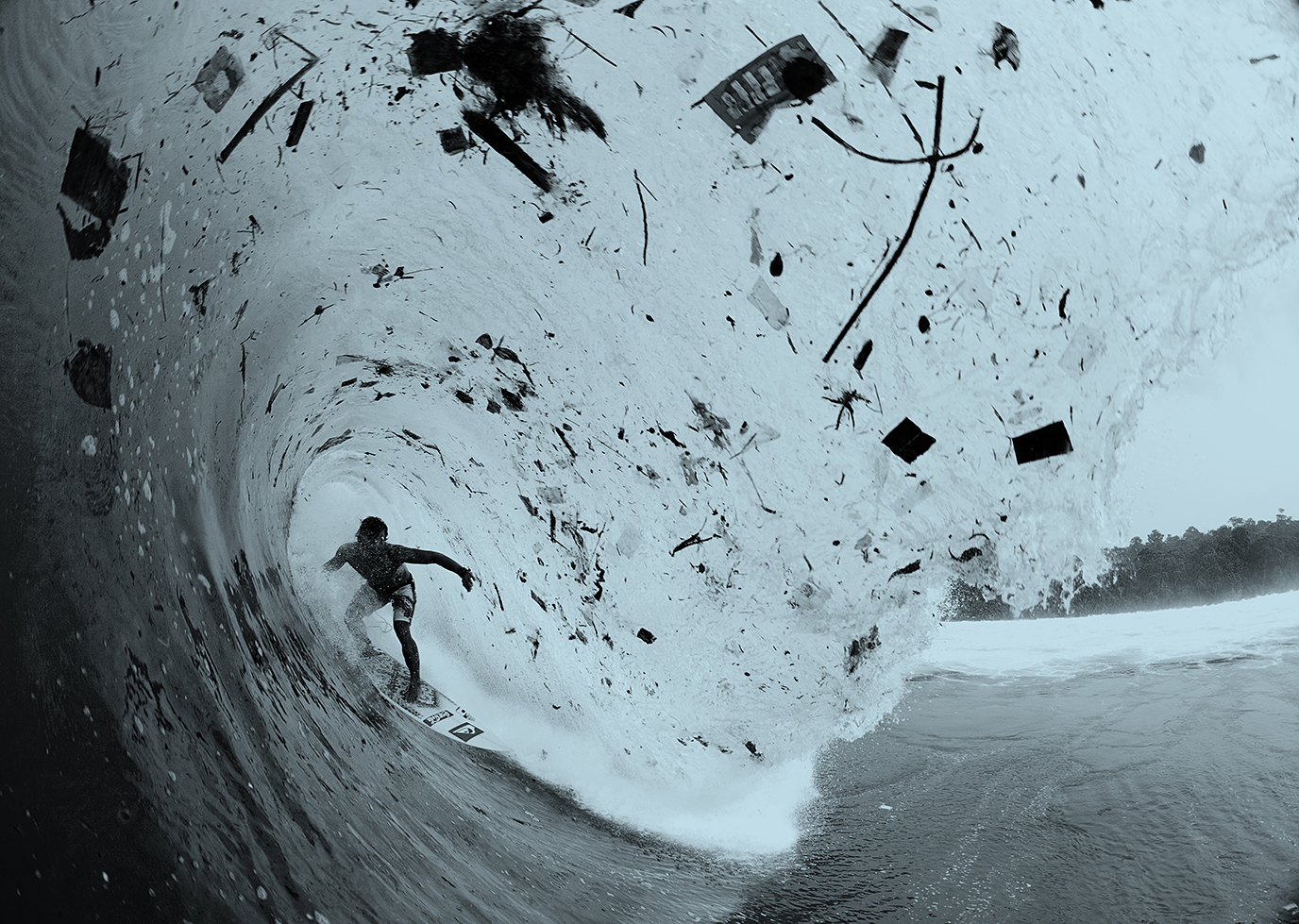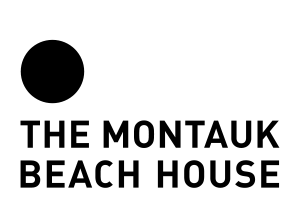In Conversation With Parley For The Oceans Founder Cyrill Gutsch
Designer and activist Cyrill Gutsch has married his two passions to benefit the future of our oceans with a space that invites the creative community to raise awareness for the issues threatening the most important ecosystem on our planet. Through collaboration, innovation, and creation, Parley targets looming environmental threats against oceanic life and aims to find solutions through partnerships with other eco-friendly efforts ranging from art to fashion to other facets of culture. We sat down with Gutsch to chat about Parley’s mission and how its impact combats the threats we read about everyday.
 What were you doing before starting Parley and how have you incorporated that background into the organization and its mission?
What were you doing before starting Parley and how have you incorporated that background into the organization and its mission?
I’m a designer, and before I started Parley I specialized in launching new brands or turning struggling companies around. Problems have always been inspiring for me. If something breaks down or a structure is falling apart, then there is an opportunity for improvement. Collaboration has always been the focus of my work. I’m used to working with the best talent and bringing them into an environment that allows “cross intelligence.” This approach is central to the mission and strategy of Parley.
You say it is the responsibility of the creative community to turn around the damage being done to our oceans. Can you please elaborate on this?
For many years, activists have tried to bring attention to these issues. There’s a lot of talk, but there isn’t enough action. It’s important to show the world that solutions are possible and that even the smallest acts matter. The creative industries will allow us to take this message further.
I believe we can solve most of our problems with imagination, collaboration and innovation. The creative communities have the tools and the influence to design the reality we live in, therefore the responsibility rests foremost on their shoulders. We can all take action as consumers, but artists, designers, musicians, actors, scientists across all disciplines have the power to change the economic system that runs our planet and help synchronize it with the ecosystem of nature. We have to make it more lucrative to actually protect our oceans than to destroy them. And it’s up to the creative class to make that happen.
How is Parley looking to invite creatives to participate in ocean damage reversal and preservation?
It’s human nature to always move forward. But it’s unrealistic to think we can just turn back the clock and make this problem disappear overnight. We have to think and invent our way out of this. And we have to work together in order to succeed.
Everything begins with inspiration. Our goal is to provide that inspiration and knowledge to the creative industries in the form of talks, workshops and conferences. We also develop ideas, concepts and run projects in the fields of education and communication, research and development, and direct action.
How do you think harnessing the solution to environmental threats by virtue of the arts will help increase awareness? How do you hope to see it push the impetus?
The artist is at the core of the Parley movement. He is the only one that can commute between every social layer and has the respect of even the most specialized experts or powerful leaders. The artist finds a way to communicate, to overcome barriers of language and unknown jargons. And people listen, because the motivation is always to create something or to truly understand a subject. It’s a clear and pure motivation.

Then there is the art itself. Art can communicate in a direct way and and make a very powerful statement, or even become a symbol for a cause. Of course, there is the monetary aspect as well. Donating art to a cause helps raise funds that support the mission and initiatives. The point is we all respond to beauty. Art provides a way to share this beauty in a way that awakens people to the reality of the situation. It creates a societal mirror. Once we understand what plastic is doing to our oceans, to all of us, we start demanding alternatives. The vision of artists and creatives precedes the action for change.
There are a lot of looming threats affecting the fate of our oceans, what are some of the specific issues Parley is focusing on now?
There are many complex issues, and that’s part of the problem. It can be overwhelming. But everything is interconnected. If we can narrow our focus to one issue, solutions for the rest will follow. In the short term, our primary objective is to counter the threats of ocean plastic through collaborative projects and a comprehensive strategy we call A.I.R.: Avoid. Intercept. Redesign.
Plastic as it exists today is a design failure, most likely caused by a lack of imagination. You can never get rid of something that doesn’t biodegrade. You can only displace it. The reality is every piece of plastic ever created is still out there in some form, and what doesn’t get recycled is either burned or buried in a landfill, or washed out to sea.
At this point there is more plastic than plankton in the oceans. Even if we invent a totally new material today, it will take time before a large-scale substitution is viable. Therefore we split our Ocean Plastic Program into two parts. The immediate answer is to build a global cleanup network, which cleans up beaches and removes discarded or lost fishing net from the high seas. The last net we retrieved with our partners Sea Shepherd was approximately 70 km long. The PET (Polyethylene terephthalate) we recover is upcycled in partnership with Bionic Yarn and returned back to the cycle in a closed loop.
In order to recycle the rest, we run an extensive research and development project for material innovation in partnership with leading scientists, including the godfather of Green Chemistry, John Warner of Warner Babcock Institute for Green Chemistry.
With all of the alarming statistics out there, what are some of the positive things you see changing that can perhaps give us hope?
The internet is currently saturated with massive, incomprehensible statistics and even wonder-machine methods for vacuum cleaning the oceans. Thus far, we don’t see any technology that’s going to provide the magic answer, but we do see progress in the awareness these headline-making projects bring to ocean issues. Although the statistics remain inconclusive and difficult to grasp, at least they get people thinking and talking.
We’re a ways off from long-term, large-scale solutions, but we are already seeing major steps forward across all levels, from the reactions of individual supporters on social media, to the data being collected by our cleanup partners and environmental organizations, to the decisions being made and interest we’re receiving from the executive levels of major brands. The Parley movement is gaining strength and momentum, and that gives us hope that we can fix this.
Tell us more about your collaboration with adidas. How did that come about and what are you hoping to accomplish with it?
 Our collaboration with adidas is a dream come true several years in the making. They looked at this partnership from all sides and did a comprehensive evaluation of Parley before agreeing to partner up for the next five years. The vision is to work as one team, to have a highly collaborative working relationship where both organizations bring in their ideas, knowledge and network. We are extremely excited about this, and extremely grateful. It takes a lot of courage for a company of this size to commit to our cause and to dive in as they have. And as they dive, they are accompanied by a massive international fan base. This creates incredible potential to bring ocean conservation into a whole new dimension.
Our collaboration with adidas is a dream come true several years in the making. They looked at this partnership from all sides and did a comprehensive evaluation of Parley before agreeing to partner up for the next five years. The vision is to work as one team, to have a highly collaborative working relationship where both organizations bring in their ideas, knowledge and network. We are extremely excited about this, and extremely grateful. It takes a lot of courage for a company of this size to commit to our cause and to dive in as they have. And as they dive, they are accompanied by a massive international fan base. This creates incredible potential to bring ocean conservation into a whole new dimension.
One of the most important goals of the partnership is to look at the current usage of virgin plastic and to cut that down as much as possible. That makes a big and immediate difference. We are also working together to create innovative production methods, materials and new product design concepts, which will hopefully inspire other industries to follow suit and establish a new way of collaborative thinking between creators, environmentalists and major brands.
What other types of brands would you like to collaborate with and why?
Everyone has something to bring to the table. Diversity is the key to healthy ecosystems. It’s also the key to any movement dedicated to protecting them.
The best candidates for partnerships are those brands that already cater to the ocean’s biggest fans and advocates — surfers, boaters, explorers. We’re in the process of launching projects with the maritime and surf communities to mobilize collaboration and solutions.
Can you give us some insights on other current projects? How do you hope to see them grow?
One of the biggest obstacles right now is that nobody really has the full picture of what is going on — where the plastic is located and in exactly what quantities. So the next logical step for us is to deepen scientific understanding of the problem. Under the direction of Roger Payne and Iain Kerr from Ocean Alliance and a collaboration with a charter boat company, we are starting a research program called “Ocean Sentinels.” This initiative aims to turn over 400 charter boats into citizen science research vessels, where sailors contribute their time to run simple tests and recover ocean plastic. This will finally produce a complete and representative stream of big data.
Jacques Cousteau said, “We only protect what we love. And only love what we know.” We’re launching Parley Ocean School to educate and connect the next generation, today’s opinion leaders and top executives with the sea. The goal is to create a new class of insiders and ambassadors for the cause.
And of course, there’s our ongoing Parley Talks series. The follow-up to our UN x Parley “Oceans. Climate. Life.” event will be held in Paris during COP21 in early December. This is a critical year for international climate change negotiations and we want to make sure the oceans, the planet’s largest climate regulator and life support system, remain at the forefront of these conversations.
We’re all very late in the game, but in today’s world things can happen overnight. It’s all about finding the right concept and bringing the right people together to build realistic solutions. There’s still time to turn this thing around.

Images courtesy of Parley – Learn more HERE!
Guest Written by Greg Mania.
